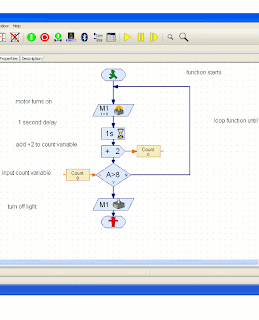1) What was the “Moneyball”approach that Billy Beane and Peter Brandt applied to the Oakland Athletics 2002 season? Was it an “art” or a “science”? What single statistic did they boil their value consideration down to? (In class research/discussion)
Billy Beane and Peter Brandt decided to use factual data and statistics to get the best players and win the season. It was a science. The used the single statistic of "who gets most on base" to narrow it down to the best players.
2) What is the equation used to calculate OBP? (In class research/discussion)
OBP = (Hits + Walks + Hit by Pitch) / (At Bats + Walks + Hit by Pitch + Sacrifice Flies).
3) What is design? (In class research/discussion)
| A plan produced to show the look and function or workings of a building, garment, or other object before it is built or made. |
4) Describe 3 situations where movie characters (intentionally or not) applied a step from the PLTW 12 Step Design Process. Explain both the (a) situation as well as (b) how the step is relevant:
1 -He had a vision or a plan.
2 - He designed a team based on his statistics.
3 - He fired people who didn't work well and hired new ones to fit the missing job. He reiterterate the process of building a proper team.
5) What is “Leadership”? List the three aspects of leadership that we come up with in class. (In class research/discussion)
1 -Direction
2 -Alinement
3 -Committment
6) Describe 3 circumstances from the story where a character exercised effective leadership:
1 - Billy Beane had a vision.
2 - Billy Beane committed to his choices regardless of risk factor.
3 -He resolved problems.
7) According to the movie, what was the A’s record at the start of their winning streak? _
76__ : __51_
8) What does this ratio simplify to (roughly)? _
1.5__ : 1
9) How long was the A’s record setting winning streak? _
20__ games won.
10) Given the A’s win/loss ratio at the start of the streak (listed two questions above), what are the odds of winning 20 games in a row? Run the numbers. (In class research/discussion)
76/(76+51) = .59 .59^20 = .0000261 .00261%
11) Based on your calculation, do you think the A’s got lucky or was there something to the Moneyball approach?
I think there was both luck and math approached to win. They had their calculations so it was obviously possible to have 20 straight wins but you never know how a player will play on a specific day.
12) Did Billy Beane strictly apply the “science” of Moneyball to his management approach? Was there an “art” to his efforts as well? Describe a circumstance where he broke from the Moneyball approach to make a positive change for the team.
There was an art to his efforts because he didn't strictly stick to the moneyball approach but do to his experience he realized his odds would raise if he gave emotional support to the team which would boost their confidence. He also fired Giambi (?) because he had poor moral.
Bonus Question (look into this if you’ve finished ahead of the class):
Money Ball was originally a book. What author wrote the book? What other books has this author written? Is there a theme to his writing?
Michael Lewis was the author. He also wrote
Panic: The Story of Modern Financial Insanity, The Blind Side: Evolution of a Game , etc. His book have a common them of involving economics in any real life situation.
It's "Oscar Season", will Moneyball win the Oscar for any of the categories it's up for?
It had many nominations but it didn't win any of them.














)



